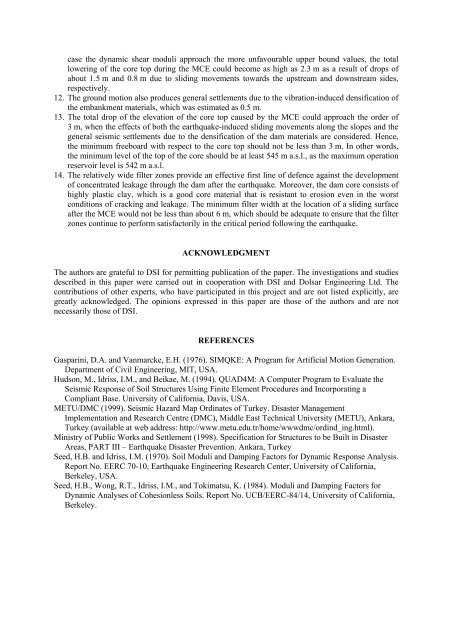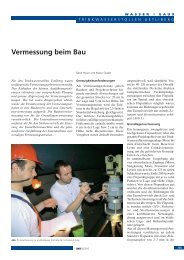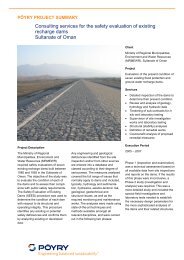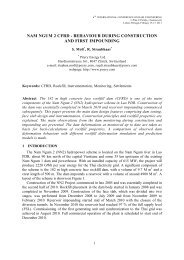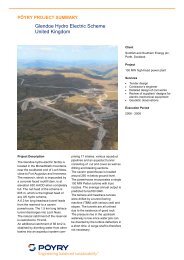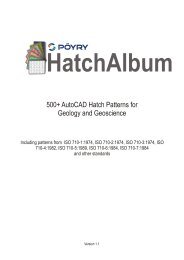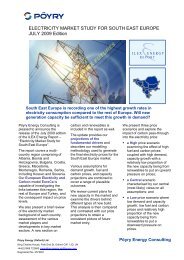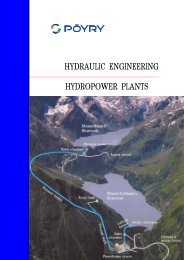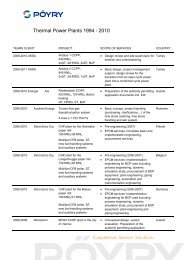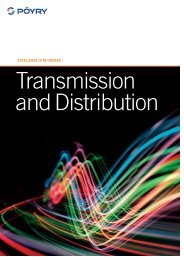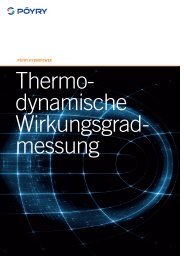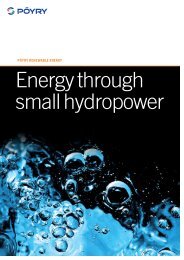EARTHQUAKE SAFETY EVALUATION OF ATATURK DAM
EARTHQUAKE SAFETY EVALUATION OF ATATURK DAM
EARTHQUAKE SAFETY EVALUATION OF ATATURK DAM
You also want an ePaper? Increase the reach of your titles
YUMPU automatically turns print PDFs into web optimized ePapers that Google loves.
case the dynamic shear moduli approach the more unfavourable upper bound values, the total<br />
lowering of the core top during the MCE could become as high as 2.3 m as a result of drops of<br />
about 1.5 m and 0.8 m due to sliding movements towards the upstream and downstream sides,<br />
respectively.<br />
12. The ground motion also produces general settlements due to the vibration-induced densification of<br />
the embankment materials, which was estimated as 0.5 m.<br />
13. The total drop of the elevation of the core top caused by the MCE could approach the order of<br />
3 m, when the effects of both the earthquake-induced sliding movements along the slopes and the<br />
general seismic settlements due to the densification of the dam materials are considered. Hence,<br />
the minimum freeboard with respect to the core top should not be less than 3 m. In other words,<br />
the minimum level of the top of the core should be at least 545 m a.s.l., as the maximum operation<br />
reservoir level is 542 m a.s.l.<br />
14. The relatively wide filter zones provide an effective first line of defence against the development<br />
of concentrated leakage through the dam after the earthquake. Moreover, the dam core consists of<br />
highly plastic clay, which is a good core material that is resistant to erosion even in the worst<br />
conditions of cracking and leakage. The minimum filter width at the location of a sliding surface<br />
after the MCE would not be less than about 6 m, which should be adequate to ensure that the filter<br />
zones continue to perform satisfactorily in the critical period following the earthquake.<br />
ACKNOWLEDGMENT<br />
The authors are grateful to DSI for permitting publication of the paper. The investigations and studies<br />
described in this paper were carried out in cooperation with DSI and Dolsar Engineering Ltd. The<br />
contributions of other experts, who have participated in this project and are not listed explicitly, are<br />
greatly acknowledged. The opinions expressed in this paper are those of the authors and are not<br />
necessarily those of DSI.<br />
REFERENCES<br />
Gasparini, D.A. and Vanmarcke, E.H. (1976). SIMQKE: A Program for Artificial Motion Generation.<br />
Department of Civil Engineering, MIT, USA.<br />
Hudson, M., Idriss, I.M., and Beikae, M. (1994). QUAD4M: A Computer Program to Evaluate the<br />
Seismic Response of Soil Structures Using Finite Element Procedures and Incorporating a<br />
Compliant Base. University of California, Davis, USA.<br />
METU/DMC (1999). Seismic Hazard Map Ordinates of Turkey. Disaster Management<br />
Implementation and Research Centre (DMC), Middle East Technical University (METU), Ankara,<br />
Turkey (available at web address: http://www.metu.edu.tr/home/wwwdmc/ordind_ing.html).<br />
Ministry of Public Works and Settlement (1998). Specification for Structures to be Built in Disaster<br />
Areas, PART III – Earthquake Disaster Prevention. Ankara, Turkey<br />
Seed, H.B. and Idriss, I.M. (1970). Soil Moduli and Damping Factors for Dynamic Response Analysis.<br />
Report No. EERC 70-10, Earthquake Engineering Research Center, University of California,<br />
Berkeley, USA.<br />
Seed, H.B., Wong, R.T., Idriss, I.M., and Tokimatsu, K. (1984). Moduli and Damping Factors for<br />
Dynamic Analyses of Cohesionless Soils. Report No. UCB/EERC-84/14, University of California,<br />
Berkeley.


